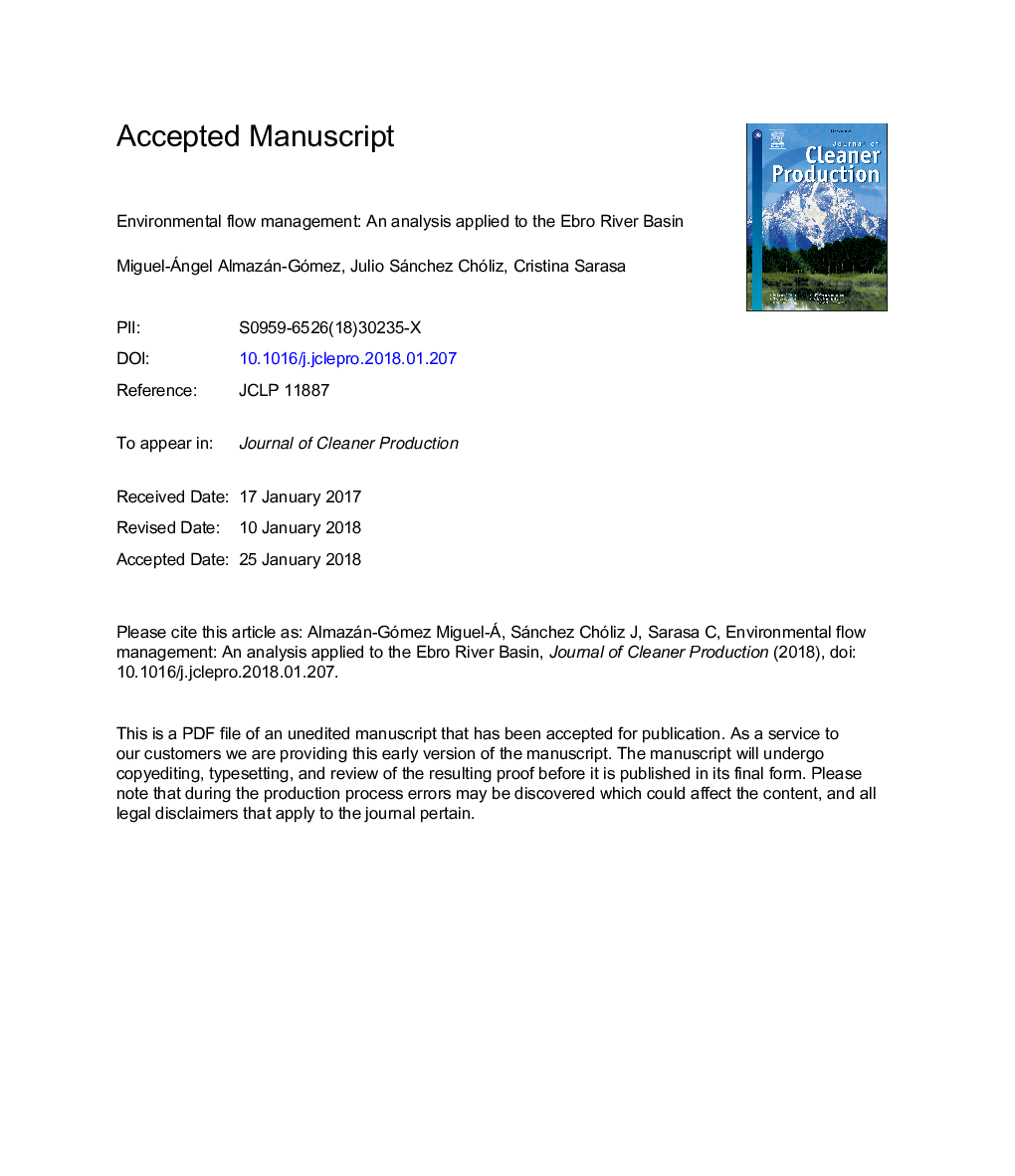| Article ID | Journal | Published Year | Pages | File Type |
|---|---|---|---|---|
| 8097466 | Journal of Cleaner Production | 2018 | 26 Pages |
Abstract
Environmental flows (EF) define the quantity, timing and quality of river flows needed to preserve freshwater ecosystems while assuring the continuity of human use. Insofar as they reduce water availability and condition agricultural and industrial uses, EF represent a constraint, but they also hold out new opportunities for development. This study focuses on the final stretch of the Ebro River (Spain) and on the competing environmental uses of water (the Ebro Delta is a biosphere reserve) and economic uses (irrigation and electricity generating). Environmental flows in the Ebro Delta are currently managed only from the Mequinenza dam and reservoir in eastern Aragon, and the resulting outflows have more than once driven the level of the reservoir down to critical environmental levels in recent years. In general, this management policy has also caused a range of negative environmental and economic impacts in the area. However, other alternatives exist, which could foster both more cooperative and equitable flow allocations, and the development and sustainability of the Ebro Basin. To this end, we develop a water management model to simulate scarcity scenarios and measure the associated environmental flow default rates assuming current productive uses. Our findings confirm that it is not possible to guarantee EFs in the delta without reservoir-based water management so as to ensure the compatibility of EFs with the irrigation and hydroelectric activities. Moreover, the existence of more equitable and cooperative water management options would reduce water pressures on Mequinenza dam and so help fulfill the subsidized irrigation commitments established in Aragonese Lower Ebro Plan.
Related Topics
Physical Sciences and Engineering
Energy
Renewable Energy, Sustainability and the Environment
Authors
Miguel Ángel Almazán-Gómez, Julio Sánchez-Chóliz, Cristina Sarasa,
